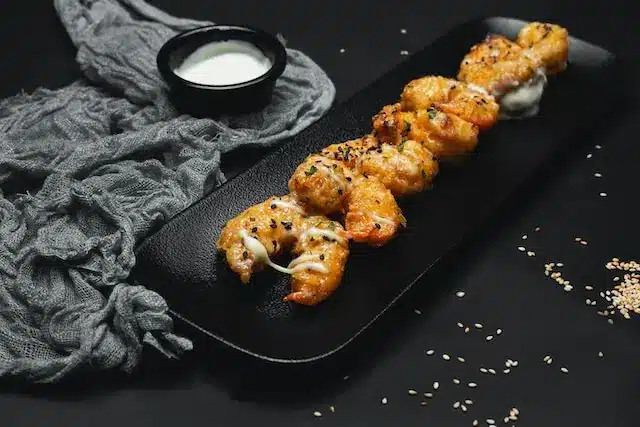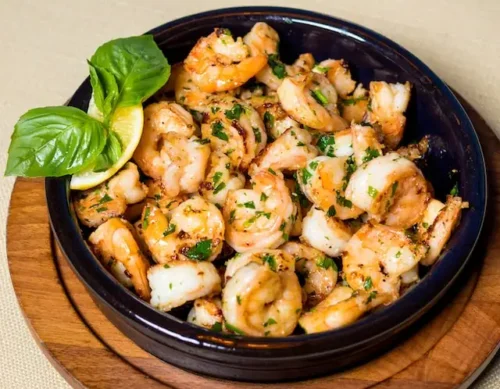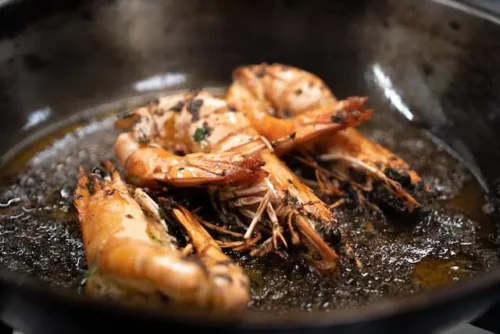
9 Mistakes To Avoid When Cooking Shrimp
The delicate texture and delicious flavor of cooking shrimp have made it one of America’s favorite seafood preferences. A survey shows that Americans consume a billion pounds of shrimp annually. But how many of them know how to cook it the right way?
Learning how to cook shrimp like a MasterChef can elevate your gastronomic experience. Though, like any other culinary endeavor, some common mistakes can ruin shrimp dishes and mess up their flavor. This blog sheds light on some mistakes you should avoid when cooking shrimp, especially if you’re doing it for the first time.
1. Buying The Wrong Shrimp
Learn how to look for the perfect shrimp in the market to prepare the dish you want to cook. Start by choosing the right-sized shrimp; for instance, larger ones are more suitable if you plan to grill them. Most importantly, consider the freshness of the specimen you find in the fish market. If you’re fortunate enough, you’re better off buying shrimp that was frozen right after getting caught.
Don’t buy mushy, pre-cooked, or previously-frozen shrimp, as they may have already been spoiled. Also, avoid shrimp that smells like ammonia, a telltale sign of shrimp gone bad.
2. Cooking It The Wrong Way
There are many ways to cook shrimp, including frying, boiling, grilling, sautéing, etc. But you must follow the recipe and choose the right method when cooking shrimp. For instance, boiling and grilling will save time when you’re short on time, but frying is the most well-known method of preparing shrimp dishes. You can find easy fried shrimp recipes online that you can make in just 25 to 30 minutes. Just make sure you don’t deviate from what the recipe says.
3. Lack of Moisture or Marinade
Make sure you have marinated the shrimp properly. Marinating shrimp infuses it with flavor and enhances its taste. Chefs recommend marinating raw shrimp for 30 to 60 minutes; don’t let it for more than one hour; otherwise, it will come out tough and chewy. Incorporate enough moisture when preparing shrimp.
Besides standard marinade, you can use sauce or butter to prevent it from drying out quickly. Keep the seafood soaked in the liquid of your choice. But you can also create your signature marinade. This requires olive oil, lemon juice, minced garlic, chopped herbs (such as parsley, basil, or cilantro), maple syrup, and a few pinches of red pepper flakes.
4. Not Thawing It Properly
Thawing your shrimp improperly will spoil them. People often make the mistake of thawing shrimp in a microwave or just defrosting them on the counter. However, the correct approach to thawing shrimp is to let them stay overnight in the fridge, or you can put them in an airtight container before dropping them in a bowl of cold water. It’ll make them defrost properly so you may cook the shrimp the correct way. Moreover, it’ll help you maintain freshness and prevent bacterial growth.
5. Leaving The Shells On/Off
Don’t discard the shells after peeling the shrimp, lobster, crayfish, or other seafood delicacies. Just preserve these shells in your freezer to serve them to guests who like to eat shrimp dishes with some finely-prepared bisque.
Some people prefer eating shells as their crunchy flavor sits well with them. However, others prefer to eat shrimp without shells. Shrimp shells are edible and not poisonous at all. However, they lack any nutritional value. Also, when grilling shrimp, you must keep the shells on to prevent overcooking them.
6. Forgetting To Devein It
Don’t forget to clean the shrimp before cooking it. Cleaning the shrimp means deveining it, i.e., removing its guts (digestive tract) which looks like a black vein. However, consuming these parts isn’t bad for your health; they’re just filthy to look at and will ruin the flavor of your shrimp dish. Here is how you can devein shrimp:
- Rinse the shrimp under cold water
- Lay it on a board with its back facing up
- Make a shallow incision along its back and look for the vein
- Gently lift or scrape out the vein using the tip of your knife to expose it
- Once it’s exposed, grasp it with your fingers or a paper towel and pull it out completely
7. Overcooking the shrimp
It’s not unhealthy to consume overcooked shrimp. It’ll just become rubbery and lose its crunchy taste. That’s why you should take extra caution and avoid not to burn your shrimp. Look for some obvious indications that your shrimp is well-cooked. These indications are:
- When the thickest part of the shrimp becomes pink, it means it is done
- If your shrimp has a tinge of gray or translucency, it means they’re not done yet
- When the shrimp lose their C-shape and curl into an O-shape, they are overcooked
8. Using Too Much Breading
Excessive breading can make your shrimp dishes taste unappetizing. Now, you don’t want seafood to taste greasy. So, keep the bread coating on your shrimp light and crispy. An easy-to-apply mixture of flour and cornstarch will be enough to coat the shrimp properly.
Also, remember to shake off any excess flour on the shrimp. Don’t press the breading too firmly when cooking the shrimp.
Read More: 7 Tips For Cooking Vegan Food
9. Not Seasoning It Like a Pro
Improper seasoning methods can end up creating a bland shrimp dish. Shrimp cooks must learn how to prepare a delicious-tasting seafood cuisine by using the right combination of herbs and spices. Well-seasoned shrimp requires salt, pepper, paprika, onion, garlic powder, dried thyme, lime or lemon, and some oil or butter. Sprinkle these ingredients properly after cleaning the shrimp.
Don’t forget about tossing it and rubbing all the spices on the shrimp evenly. Use your hands to ensure all the shrimp are evenly coated.
Conclusion
Creating shrimp dishes that are tender, flavorful, and fit for a king’s dinner isn’t difficult. However, certain mistakes can ruin your seafood delight and the dining experience. From choosing the right product to seasoning it properly – you should navigate the entire shrimp-cooking process cautiously. Devein and clean the shrimp accurately. Do not overcook or use breading excessively. Learn to thaw it right. And, most importantly, have a shrimp-cooking recipe by your side to prepare something finger-lickin’ good!



